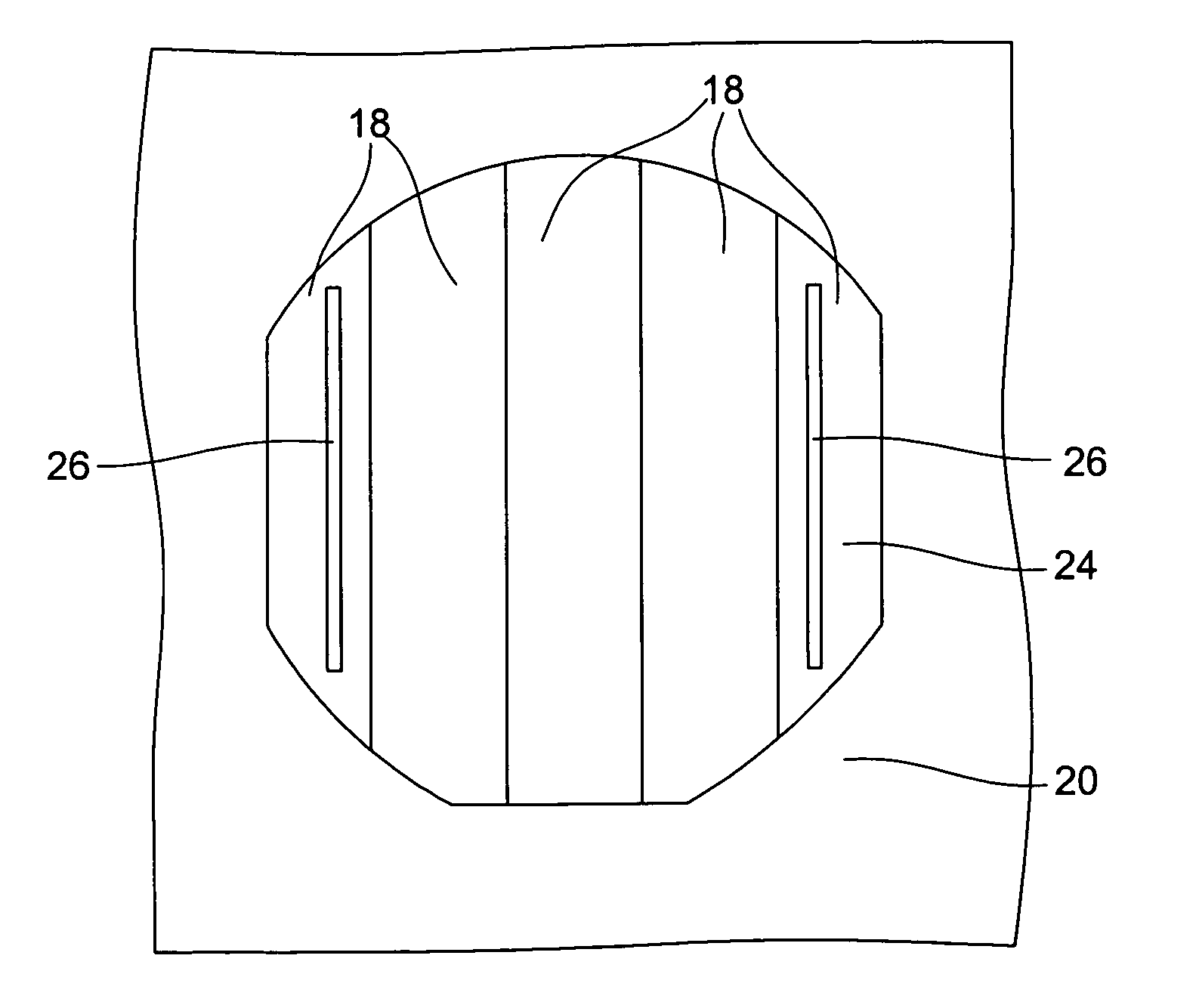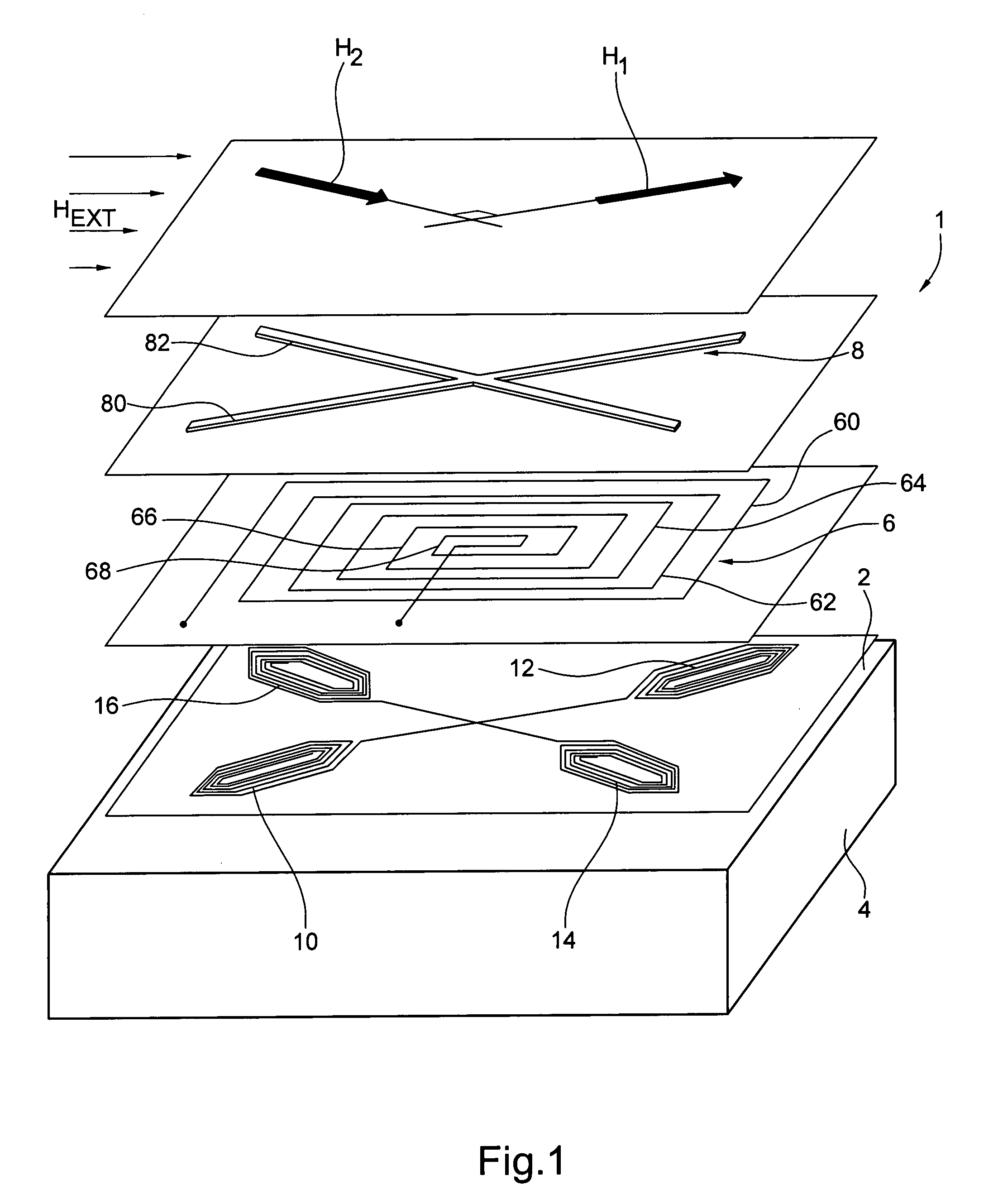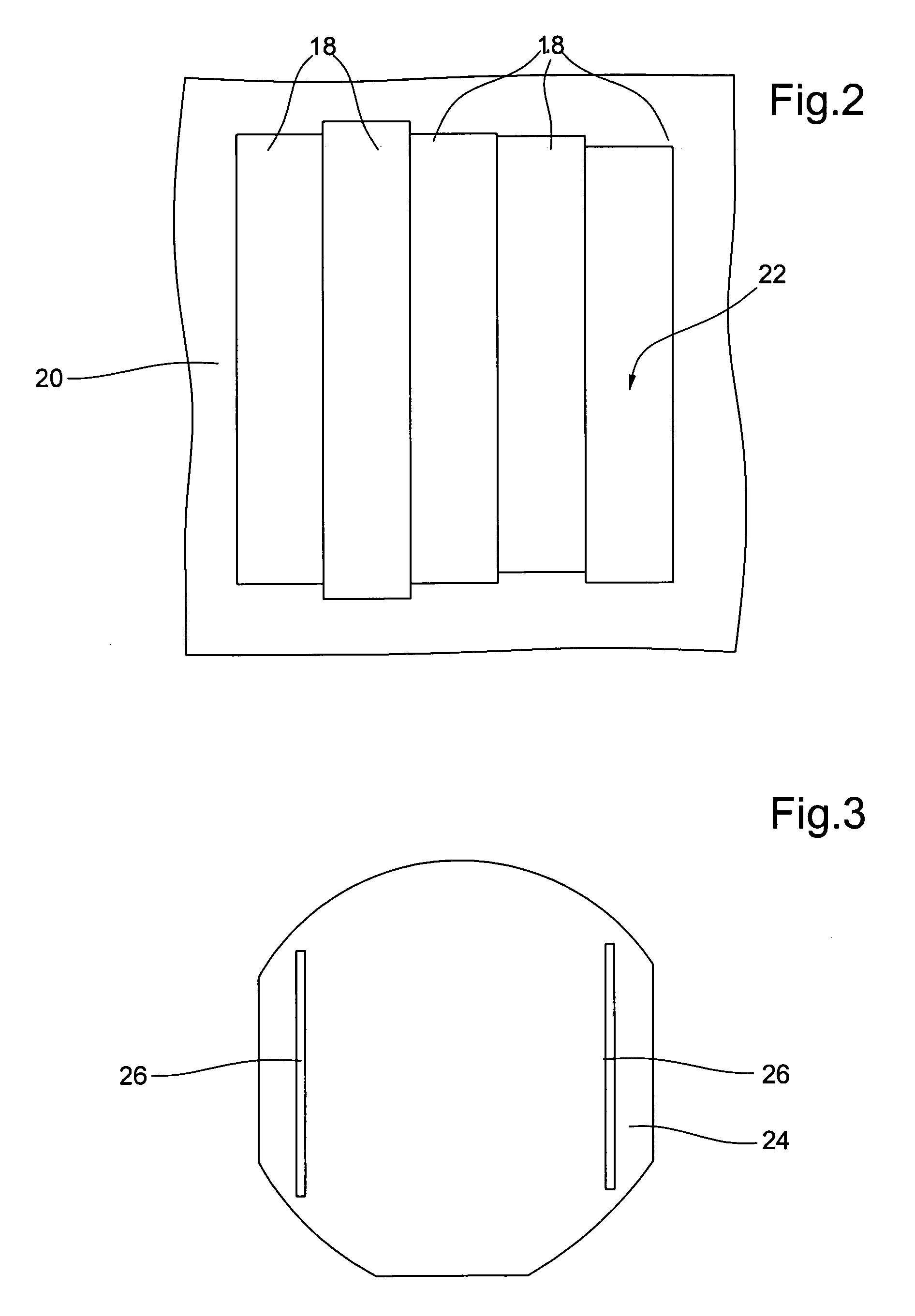Method for mass production of a plurality of magnetic sensors
a technology of magnetic sensors and mass production, applied in the field of methods, can solve the problems of not being able to produce components with an amorphous structure, the detection and measurement of magnetic fields of devices, and the day has been resolved in a satisfactory fashion, and achieves the effects of facilitating the adhesion of the film, reducing the cost price, and great uniformity
- Summary
- Abstract
- Description
- Claims
- Application Information
AI Technical Summary
Benefits of technology
Problems solved by technology
Method used
Image
Examples
Embodiment Construction
[0028]The present invention starts with the general inventive concept which comprises forming a film of amorphous magnetic material by means of a plurality of bands of amorphous magnetic material which are disposed one beside the other on a support and gluing the thus obtained film on a semiconductor board, in which the electronic circuits associated with the magnetic sensors which are intended to be produced have been previously integrated. After this gluing step, the film of amorphous magnetic material is structured by etching in order to form the magnetic cores which form the part of the magnetic sensors sensitive to the exterior magnetic field. Thanks to these features, the problem posed by the techniques currently available for production of semiconductor devices which do not allow production of amorphous layers is resolved, and the production in series of magnetic sensors with amorphous magnetic cores is made possible.
[0029]The present invention will be described in conjunctio...
PUM
 Login to View More
Login to View More Abstract
Description
Claims
Application Information
 Login to View More
Login to View More - R&D
- Intellectual Property
- Life Sciences
- Materials
- Tech Scout
- Unparalleled Data Quality
- Higher Quality Content
- 60% Fewer Hallucinations
Browse by: Latest US Patents, China's latest patents, Technical Efficacy Thesaurus, Application Domain, Technology Topic, Popular Technical Reports.
© 2025 PatSnap. All rights reserved.Legal|Privacy policy|Modern Slavery Act Transparency Statement|Sitemap|About US| Contact US: help@patsnap.com



